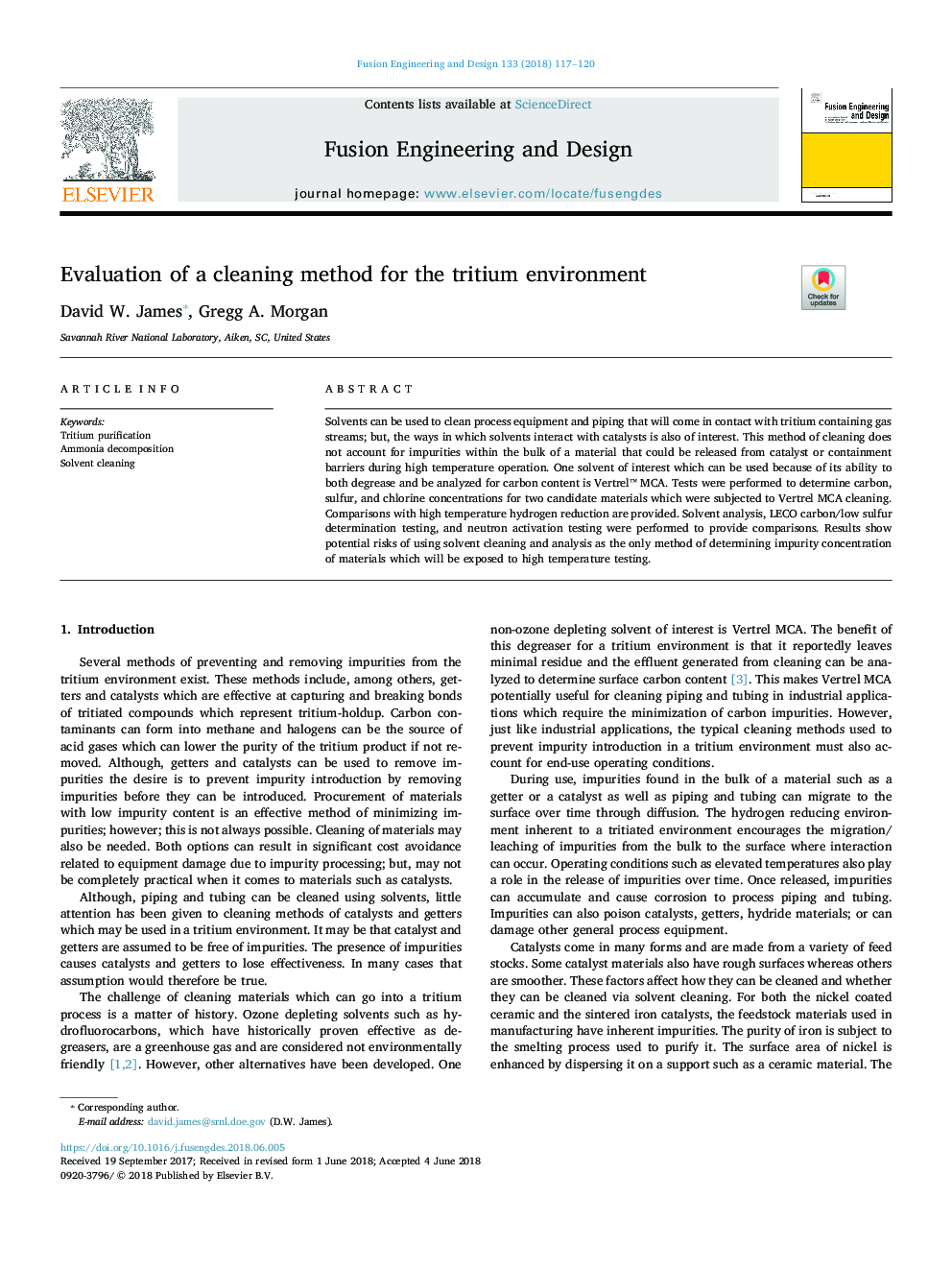| Article ID | Journal | Published Year | Pages | File Type |
|---|---|---|---|---|
| 6742934 | Fusion Engineering and Design | 2018 | 4 Pages |
Abstract
Solvents can be used to clean process equipment and piping that will come in contact with tritium containing gas streams; but, the ways in which solvents interact with catalysts is also of interest. This method of cleaning does not account for impurities within the bulk of a material that could be released from catalyst or containment barriers during high temperature operation. One solvent of interest which can be used because of its ability to both degrease and be analyzed for carbon content is Vertrel⢠MCA. Tests were performed to determine carbon, sulfur, and chlorine concentrations for two candidate materials which were subjected to Vertrel MCA cleaning. Comparisons with high temperature hydrogen reduction are provided. Solvent analysis, LECO carbon/low sulfur determination testing, and neutron activation testing were performed to provide comparisons. Results show potential risks of using solvent cleaning and analysis as the only method of determining impurity concentration of materials which will be exposed to high temperature testing.
Keywords
Related Topics
Physical Sciences and Engineering
Energy
Energy Engineering and Power Technology
Authors
David W. James, Gregg A. Morgan,
